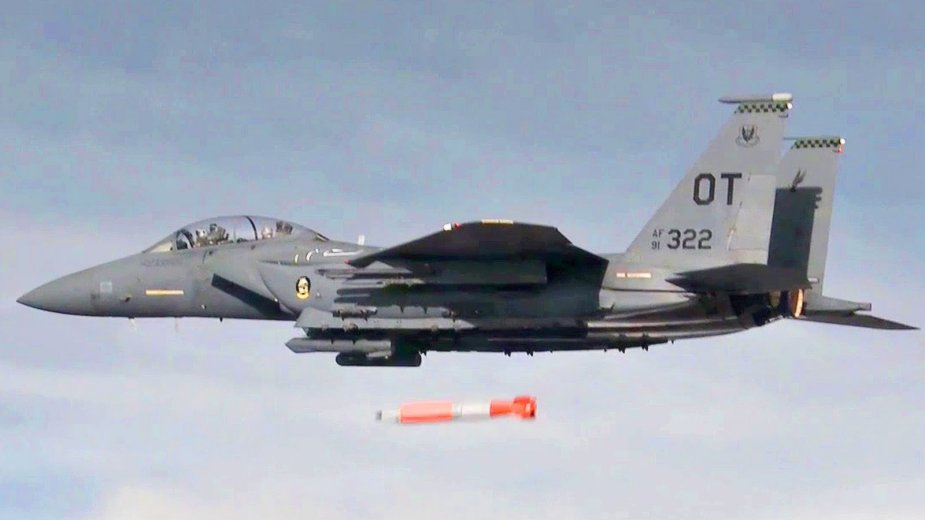The US Department of Energy’s National Nuclear Security Administration (DOE/NNSA) has successfully completed a Final Design Review for the B61-12 Life Extension Program (LEP), the service said on September 28, 2018.
 A B61-12 nuclear bomb drop test performed from an US Air Force F-15 fighter jet
A B61-12 nuclear bomb drop test performed from an US Air Force F-15 fighter jet
(Credit: Staff Sgt. Cody Griffith/99th Air Base Wing Public Affairs)
This review ensures that the B61-12 LEP satisfies Department of Defense (DoD) requirements and is a key milestone for a joint program that sustains a critical element of the U.S. nuclear triad.
“This result is a testament to the extraordinary dedication and skill of team members across the Nuclear Security Enterprise working together to accomplish the mission,” said U.S. Air Force Brig. Gen. Ronald G. Allen Jr., NNSA Principal Assistant Deputy Administrator for Military Application. “It exemplifies our joint team’s steadfast commitment to fulfilling the Nation’s enduring requirements for a safe, secure, and effective nuclear deterrent.”
For the review, an independent team comprised of 12 military and civilian subject matter experts met at Sandia National Laboratories in Albuquerque, New Mexico, from Sept. 10 to 14 and closely examined three years’ worth of B61-12 LEP electrical, mechanical, thermal, and flight-testing data and analysis.
The independent team also reviewed the state of procedures, training, and safety at NNSA’s Pantex Plant and confirmed readiness to proceed with final production qualification activities.
The B61-12 LEP will consolidate and replace the existing B61 bomb variants in the Nation’s nuclear stockpile. Production qualification activities at Pantex will begin in October 2018, which will enable Phase 6.5 First Production authorization in September 2019. The program remains on track for First Production Unit in March 2020.
The review included representation from elements across DOE and DoD, including: Sandia National Laboratories, Los Alamos National Laboratory, Pantex Plant, U.S. Air Force Nuclear Weapons Center, U.S. Air Force A10R, U.S. Air Force Global Strike Command, U.S. Air Forces in Europe, Defense Threat Reduction Agency, and U.S. Strategic Command.
















